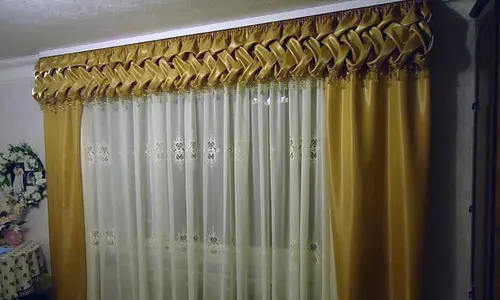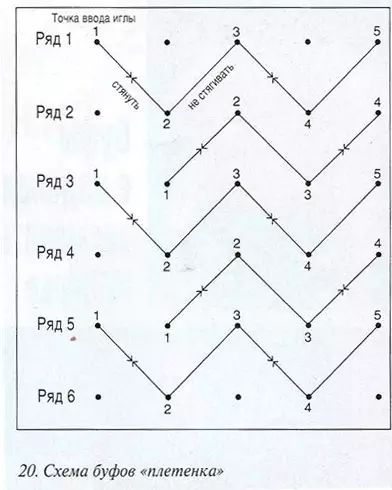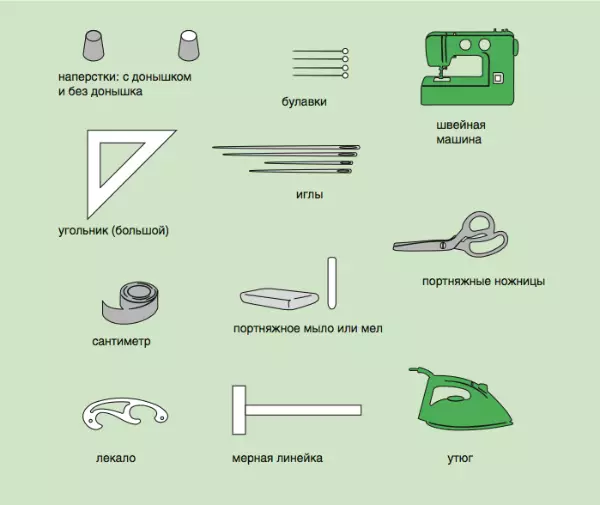For a long time, people began to give a lot of importance to the concept of such a word like buffers. Buffes are special volumetric folds that decorate various clothing objects, curtains. Creating buffers on the curtains with their own hands is becoming increasingly distributed, since in this case the curtains begin to look completely different.

Buffs are lush assemblies on the curtains and can be made of various types of fabric.
You can sew baffles for curtains with your own hands, and it has been proven in practice repeatedly. Many designers even advise that this work independently - in this case, you can safely give a flight of fantasy. You will also need only a lot of patience and some simple tools for work.
Materials for work
Before starting to sew buffers, make sure that the curtain (or the material for it) is large enough. After all, there will be quite a lot of fabric on the buffs to make folds. In addition to the curtain you need such tools and materials for work:- pencil;
- line;
- scissors;
- sticky ribbon;
- Threads under the color of the curtain;
- Pins;
- needles;
- iron.
Before sewing the buffers, you need to prepare curtains and make all the necessary markups. At first, slightly swing the entire curtain, after which spread it on a large solid table face down. In this example, consider the option of the curtain with the baffers, which are called "Braided". What it looks like on paper and what pattern on the fabric, shows in more detail the scheme.
Diagram and markup
So, you first need to take a clean sheet of A4 paper and draw a circuit on this sheet as shown in the figure above. This scheme will help you to maximally transfer such a picture on the fabric. The drawing consists of points and arrows. And the arrows indicate the direction of the thread tension from one point to the other.
Article on the topic: Circular saws on a tree: How to sharpen yourself?

Scheme buffers "Braided".
After that, proceed to the transfer of the pattern on the fabric. It is necessary to do it from the wrong side. If the fabric is light, use a simple pencil. If dark is better to use chalk. During operation, it is necessary to use a ruler so that the distance between the points is approximately equal.
Another option is to divide the speed using a ruler and a pencil into several A4 rectangles and with the help of glass and lamps (as when carrying with drawing tray) to carry each square with paper on the fabric. This method is even more convenient - you will have only once once to make accurate measurements and notes, and then just calmly copy it to the fabric.
While transferring the scheme to the Schemes, we note that minor errors in this embodiment are not too important - after all, the ornament will look quite abstract. It is important only to comply with the equity and relevance rows of threads on the tissue. That is, you need to apply the drawing so that all points are placed as parallel to these threads. So the likelihood of minor disks in the picture will reach a minimum.
Digging Buffs with Coppies
Now that the work with the markup is over, you can start the main process - sew buffs. It is necessary to work manually. And due to the fact that it will be necessary to cut down almost on each replica and fix the thread, work will come out quite painstaking. Therefore, everything you need to stock, are patience, durable threads in the color of the curtains, as well as a thin needle for work and scissors.

Tools for sewing buffs.
Work is starting so. First we make nodules on the thread and stretch it with the needle in the first point according to the scheme from which the arrow begins to go. Only stretch not to the end: we leave the tail about 4 cm, and the base is fixed by the node so that the tail does not get out. Further, the remainder of the thread is in the point in the scheme where the arrow enters. After that, the thread on the arrow is tightened so that the first tilt of the thread and the last stretched joined. They are then binding and fixed by several nodules.
Article on the topic: Attaching the loggia to the room (photo and video)
In this way, the work is performed clearly with each arrow. So the work continues above the entire curtain until everything is fully completed. As a result, on the front part you will see the wonderful small light fabric fees, which are called bulbs.
The whole charm of the creation of such decoration on the curtains is that it is absolutely necessary to make the buffs throughout the curtain. You can do only to the tops on the top or at the edges of the curtain. Moreover, in the conditions of limited tissue on the curtain, it is quite advisable.
General rules for the design of buffs
As a rule, it is possible to sew baffles on the curtains in different ways. Therefore, you can do them completely differently. There are even such versions of the buffers, where according to the scheme, the tissue with threads does not occur with the inside, but from the face. In this case, the bulge will go inside the curtains, which looks original.
But whatever option you choose, when creating supports with hopes, you need to follow several important rules.
- Be sure to take into account the density of the material. Best of all covers will look at the lungs or medium ease of fabrics. If the cloth is too heavy and the thick, the optimal effect of the volume on the curtains will not be achieved.
- The rule should be remembered that the more dense the fabric of the curtains, the stronger it is necessary to push the tissue of the cloth according to the scheme. And, on the contrary, than the cloth curtains are easier, the weaker and more carefully tightening. This is especially true of Tulle, where a very gentle and thin canvas is usually used.
- The most beautiful tubes look at monophonic curtains. If there are already a certain drawing or embroidery on the curtains, then the buffers are not recommended. First, it will be very agile to look. Secondly, the buffers will be very difficult, and inexpedient. Therefore, it is better to use other jewelry for curtains.
- Threads for sewing a bug always need to be used twice as thick and more tight than threads on the tissue of the curtains. The execution of this rule will ensure the maximum quality of the BUFE and the impossibility of their unleashing in the future. But too thick threads cannot be chosen, since they will immediately be noticeable, but it will be ugly.
Article on the topic: Pickages for curtains do it yourself - sewing and fastening
If the curtain is one-photon, but its value does not allow the entire surface to be treated with baffs, then it is possible to separate the top, the bottom or edge of the curtain. It is still as an option - to take a separate piece of material and separated by bulbs, after which you attach to the eternity as a lambrene.
